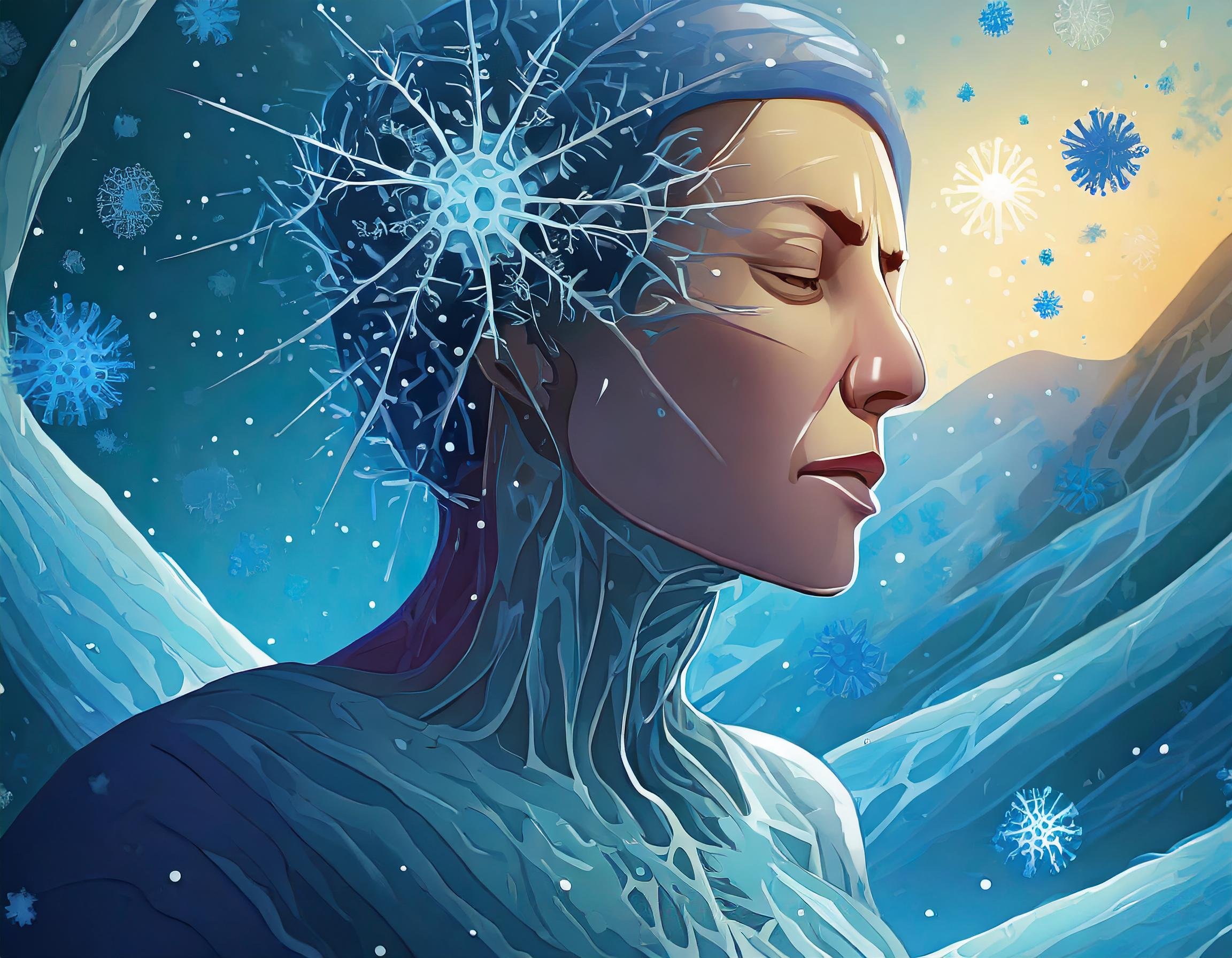Understanding Cold-Induced Vasodilation: Causes, Effects, and Treatments
Introduction
Cold-induced vasodilation, or CIVD, is the dilation of blood vessels in response to cold. On the surface, cold-induced vasodilation may seem an unusual response to you because we always associate cold with vasoconstriction.
Vasoconstriction is the initial response to cold, where the body reduces blood flow to extremities, preventing heat loss. The body reserves maximum blood for the core and vital organs to maintain internal temperature.
However, after several minutes of cold exposure, the body initiates vasodilation, increasing blood flow to the extremities. This increased blood flow after vasoconstriction is called cold-induced vasodilation. Cold-induced vasodilation plays a major role in temperature regulation and preventing cold-related injuries such as frostbite of the fingers.
This article explores the causes of cold-induced vasodilation, its positive and negative effects on the body, and treatment options.
Causes of Cold-induced Vasodilation
Cold-induced vasodilation triggers a series of changes in the body that contribute to your enhanced adaptation to cold. However, to fully understand the benefits of cold-induced vasodilation for the body, it is important to start with its causes.
Here are a few common causes for cold-induced vasodilation:
Role of the Nervous System
It is the nervous system that controls how your body responds to cold. Exposing yourself to cold activates the cold-sensitive receptors on the skin, sending electrical signals to the nervous system. The nervous system triggers either vasoconstriction or vasodilation, depending on the body’s requirements.
Studies show that the nervous system initiates cold-induced vasodilation in the extremities by causing changes in the neurotransmitters. This increases the blood flow toward the extremities to prevent extremities from cold injuries.
Role of Hormones
Hormones play an essential role in the initiation of cold-induced vasodilation. When your body is exposed to cold, your body releases the norepinephrine hormone. This hormone causes the narrowing of the blood vessels.
But as the cold exposure continues, norepinephrine levels start to drop, leading to the dilation of blood vessels and increased blood flow to the extremities.

What Triggers Cold-Induced Vasodilation
Here are some common triggers for cold-induced vasodilation:
Cold Environment
The main trigger of cold-induced vasodilation is a cold environment. Cold air or cold water activates the cold-sensitive receptors on the skin. Activating cold-sensitive receptors then results in a series of changes in the body, leading to cold-induced vasodilation.
Cold water is more likely to induce vasodilation when it comes in contact with your skin. This is because water has higher thermal conductivity than air, which allows it to act as a stronger stimulus than air.
Physical Conditioning
While a cold environment is the main trigger for cold-induced vasodilation, not everyone experiences this effect with cold. An individual’s physical conditioning plays a key role in determining how their body responds to cold, including cold-induced vasodilation.
This conditioning occurs through regular exposure to cold. Regular exposure gradually trains the body to undergo immediate compensatory mechanisms to handle the experience efficiently.
This is why people habituated to cold environments, like winter swimmers or those who take cold showers, exhibit a more efficient thermo-responsive vasodilation.
Genetics
Every individual’s sensitivity to cold is different. Evidence shows that genetics might be one reason responsible for this. Genetics likely influence how and what changes occur in the body in response to cold, including initiating cold-induced vasodilation.

Effects of Cold-Induced Vasodilation
Cold-induced vasodilation can have various effects on the body, both protective and potentially harmful. The effects of cold-induced vasodilation depend on the duration and intensity of the cold exposure.
Here are some common effects of cold-induced vasodilation on the body:
Effect on Temperature Regulation
The key role of cold-induced vasodilation is its influence on the body’s temperature regulation. Humans are homeothermic, meaning our bodies maintain their internal temperature regardless of the surrounding temperature.
When cold-induced vasodilation occurs, it takes the blood away from the core and sends it to the extremities. This can be beneficial and risky at the same time.
It is beneficial because increased blood flow to the extremities prevents extremities from cold injuries. On the other hand, increased flow of blood from the core to the extremities lowers core temperature and increases the risk of developing hypothermia.
How Cold-Induced Vasodilation Prevents Cold Injuries?
When you are in an extremely cold environment, such as during mountain climbing on glaciers, there is an increased risk of cold injury to your extremities, called frostbite.
When cold-induced vasodilation occurs in such environments, it increases the blood flow to the extremities. Increased blood flow translates to more heat at the extremities, which can protect from cold injuries.
Can Cold-induced Vasodilation Cause Hypothermia?
While increased blood flow to the extremities from cold-induced vasodilation prevents cold injuries, it also increases the risk of hypothermia. This is because your body requires heat to keep the vital organs functioning in a cold environment, and it gets this heat from the blood.
However, as the blood flows from the core towards the extremities during cold-induced vasodilation, it can drop the core’s temperature critically low, increasing the risk of hypothermia.
Effect on Physical Performance
Cold-induced vasodilation can benefit athletes, like cold water swimmers, by increasing blood flow to the extremities during practice. This enhances nutrient supply to muscles and improves performance.
However, prolonged exposure to cold can also lead to excessive heat loss due to cold-induced vasodilation. This can harm muscle function and overall physical performance.
Effect on Health Status
Repeated vasoconstriction and cold-induced vasodilation can improve circulation and positively influence cardiovascular health. Vasoconstriction and vasodilation improve circulation by controlling blood flow.
Vasoconstriction narrows blood vessels, sending more blood to vital organs and conserving heat. In contrast, vasodilation widens vessels, boosting blood flow to areas like muscles and delivering more nutrients and oxygen. This balance helps keep circulation and heart health in check.
However, cold-induced vasodilation can have some health risks, especially if you are not careful about it. Cold-induced vasodilation during prolonged exposure to the cold can lead to life-threatening hypothermia.
Treatments for Cold-induced Vasodilation
Cold-induced vasodilation usually doesn’t require treatment, as it’s a natural response to prolonged cold exposure. However, if it causes discomfort or complications, you may need to seek medical help.
Here are some treatment options for cold-induced vasodilation:
Medications
No medicine can immediately “turn off” the cold-induced vasodilation. As it is a natural response to the cold exposure, it gradually subsides. However, some vasodilator drugs are under study for their potential positive impact on cold-induced vasodilation.
Practical Management Tips
To manage cold-induced vasodilation, gradually warm the affected areas using warm (not hot) water or blankets. It helps to safely restore the normal blood flow. Wear insulated clothing to protect the body against further cold exposure and help retain body heat.
Additionally, avoid re-exposure to cold environments until symptoms subside, as repeated exposure can worsen the condition.
Preventive Measures for Cold-induced Vasodilation
Since it’s a natural response, most people don’t need to take preventive measures against cold-induced vasodilation. However, when there is a risk of hypothermia from cold-induced vasodilation, you must consider preventive strategies.
You can prevent cold-induced vasodilation by protecting your body from prolonged cold exposure. You can dress in layers with insulated clothing, which helps retain body heat.
Similarly, wearing gloves, hats, and thermal socks can protect extremities like hands, feet, and ears. Staying dry is crucial, as wet clothing can accelerate heat loss. At last, limit time spent in cold environments and let your body adapt to the cold temperatures gradually.
Key Takeaways on Cold-Induced Vasodilation
Cold-induced vasodilation occurs when you expose yourself to cold temperatures for longer durations. The immediate response of the body to cold is vasoconstriction. This causes the narrowing of the blood vessels and the body retains most of the blood in the core to support vital organs.
However, after initial vasoconstriction, the nervous system and hormonal changes cause dilation of blood vessels. This cold-induced vasodilation has many potential benefits, such as protecting the fingers from cold injuries.
Cold-induced vasodilation can also be risky, as it increases the risk of hypothermia. To avoid these risks, you need to be mindful of your exposure to cold temperatures. It’s also important to consider your own health needs to get the most out of cold-induced vasodilation.


